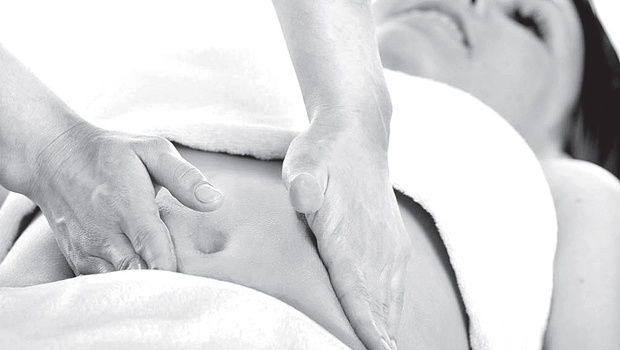
Most problems of the uterus usually go unnoticed mainly due to poor diagnostic tests. As a result, many women live with infertility that would have otherwise been treated or prevented with early diagnosis. For so long, most medical institutions have greatly relied on ultrasounds and procedures such as dilation and curettage for detection of problems in the uterus. Apparently, there is a more effective yet minimally invasive way to diagnose problems of the uterus, a procedure known as hysteroscopy.
Most problems of the uterus usually go unnoticed mainly due to poor diagnostic tests. As a result, many women live with infertility that would have otherwise been treated or prevented with early diagnosis. For so long, most medical institutions have greatly relied on ultrasounds and procedures such as dilation and curettage for detection of problems in the uterus. Apparently, there is a more effective yet minimally invasive way to diagnose problems of the uterus, a procedure known as hysteroscopy.
What is Hysteroscopy?
Hysteroscopy is a procedure that is used to examine the inside of the uterus or womb. It involves non-invasive insertion of a narrow telescope with a camera and light at the end into the uterus through the vagina and cervix. This device is known as the hysteroscope. When inserted into the uterus, the hysteroscope will transmit the images of the uterus onto a screen for better visualization of any abnormalities, infections or diseases. For purposes of treatment, the hysteroscope is used alongside other instruments.
When Can a Hysteroscopy Be Carried Out?
There are various conditions and symptoms that usually prompt a gynecologist to recommend hysteroscopy treatment for their patients. The most common instances when this procedure is carried out include the following.
-Abnormal Uterine Bleeding. One of the most common symptoms that call for this procedure includes abnormal uterine bleeding due to menstrual periods that are heavier or lighter than normal, longer or shorter than normal, or even bleeding between periods. This may be an indicator of a serious underlying issue that should be examined, diagnosed and treated, a procedure done best through hysteroscopy.
-Polyps and Fibroids. Polyps are small tissue growths that occur in the lining of the womb and may cause discomfort. Fibroids, on the other hand, are non-cancerous growths of the muscles of the womb which may also cause discomfort. Overgrown polyps and fibroids are a major cause of infertility and miscarriages, which calls for earlier diagnosis via hysteroscopy.
-Infertility and Miscarriages. Have you been trying to get pregnant for so long in vain? Or have you had several miscarriages? Then hysteroscopy is the procedure that should be recommended for you Hysteroscopy may be used to detect and determine the exact cause of your infertility or frequent miscarriages and even help in deciding treatment options.
-Treatment intrauterine adhesions. Certain conditions and processes within the body may cause the uterine tissue to form adhesions. For instance, if you have just given birth or undergone a surgical operation, there may be adhesions that need to be detected and treated within the uterus. Hysteroscopy helps a great deal in identifying and even treating these adhesions
-Insertion and Removal of Contraception. Some forms of contraception such as the intra-uterine system or coil are usually inserted into the Uterus. To take them out, the gynaecologist may need to use hysteroscopy to locate them in difficult situations. Sterilization is also another procedure that can be carried out with the use of a hysteroscope.
Steps Involved in Hysteroscopy
To ensure the best results from hysteroscopy treatment, there are particular steps that should be taken by the patient in regards to the doctor’s advice and instructions.
-Preparation. This is meant to keep the uterus clear of any obstacle. For instance, the patient should ensure that they are not pregnant Delete The best time for this to be carried out is the first week after menstruation as it provides the best view of the uterus.
-Administration of Anesthesia. Depending on the severity of the situation, the doctor may recommend local anesthesia, regional anesthesia or general anesthesia which numbs a small part of the body, a large portion of the body or the entire body respectively thus preventing pain during the procedure. You may also be given a sedative to help relax your body.
-Hysteroscopy. The cervix will be dilated by the dilators and the hysteroscope gently inserted through the vagina and cervix, and into the uterus. Normal saline is used to distend the uterine cavity for visualisation of inside of all parts of the uterine cavity including the internal openings of the fallopian tubes on a monitor.
Depending on whether the hysteroscopy is diagnostic or operative, the procedure may take as short as 5 minutes to as long as an hour. If it is diagnostic, it will take a shorter time to perform. On the other hand, operative hysteroscopy may involve insertion of small surgical instruments into the uterus through the hysteroscope and performance of technical surgical procedures, therefore taking longer.
Recovery. The entire hysteroscopy procedure does not take long and being non-invasive, it is an out-patient procedure. In cases where regional or general anesthesia has been used, the patient will be observed for a few hours before being allowed to leave the hospital. Some of the most common symptoms experienced after hysteroscopy include:
Benefits of Hysteroscopy
In addition to effectively diagnosing and treating problems of the uterus such as fibroids, polyps, adhesions, septum’s and abnormal bleeding, hysteroscopy comes with a ton of benefits. It also takes a shorter time to recover, therefore reducing the duration of hospital stay. Operative hysteroscopy treatment is more reliable as compared to hysterectomy and open abdomen surgery as it is safer, less painful and faster to heal. There are extremely few risks associated with Hysteroscopy as compared to other invasive uterine diagnostic and treatment procedures.
Diagnostic hysteroscopy usually have no complications but operative one can have –
The primary risk is infection. Patients should notify the doctor if they develop any the following symptoms:
- abnormal discharge
- heavy bleeding
- fever over 101°F (38.3°C)
- severe lower abdominal pain
Why Us?
At our clinic, you will find the most experienced and skilled group of gynaecologists and fertility experts. As a matter of fact, we have been known to perform the safest and most successful hysteroscopy procedures over the years. We know how important a woman’s reproductive health is, and as a result, have invested in the most advanced high-end diagnostic and treatment technologies and equipment.
Our main objective during hysteroscopy is to reduce the possibility of complications during and after the procedure. We work closely with the patient, carefully monitoring their progress and keeping tabs with whatever happens to them even after they leave the clinic. Our patient is our number one priority and concern, that’s why we will give you the best treatment and customize them according to each of your unique needs.




 (+91) 880 557 7600
(+91) 880 557 7600
 Abhyankar Road, Dhantoli, NAGPUR-12
Abhyankar Road, Dhantoli, NAGPUR-12





